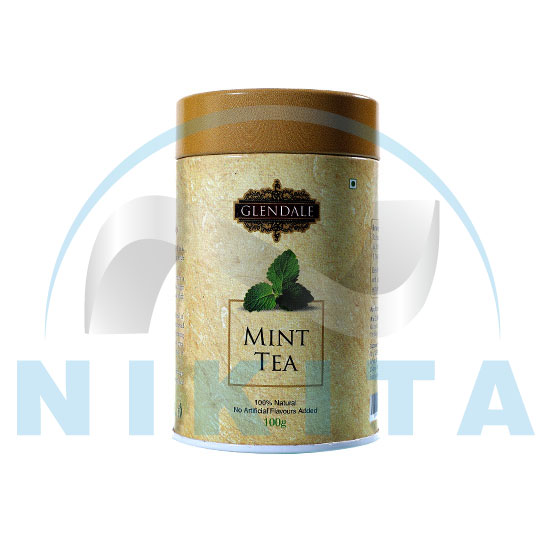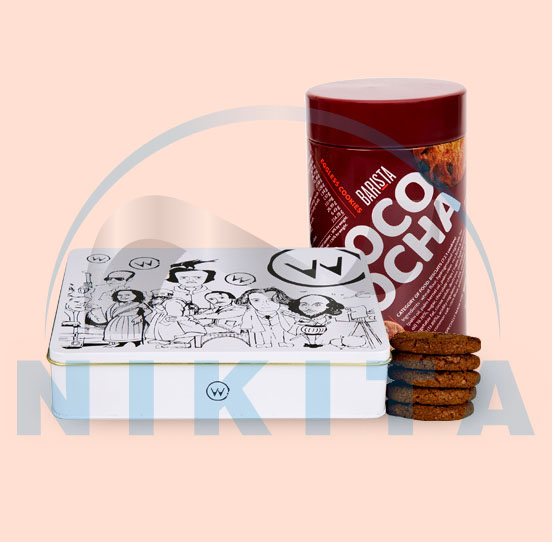The History Behind Tea Tins and Their Role in Tea Culture

Strong 8k brings an ultra-HD IPTV experience to your living room and your pocket.
Tea has a rich cultural history that spans centuries, and with it comes the evolution of tea storage methods. One of the most enduring and iconic ways tea has been stored is in tea tins. These containers, often beautifully designed, not only serve a functional purpose but also reflect the cultural and historical importance of tea across the world. In this blog, we will delve into the fascinating history behind tea tins, their role in tea culture, and how they became an essential part of the tea-drinking experience.
1. The Origins of Tea Storage
Before the advent of tea tins, tea was typically stored in simple wooden boxes, cloth bags, or porcelain jars. The earliest methods of storing tea were relatively rudimentary, with the primary goal being to protect the delicate leaves from moisture, light, and air, which could spoil the tea.
Tea itself originated in China around 2737 BC, when Emperor Shen Nong is said to have discovered it by accident. For centuries, tea was consumed mostly in China and Japan, where it was highly valued. However, it wasn’t until tea made its way to Europe in the 17th century, particularly through the Dutch and British East India Companies, that the storage of tea became more sophisticated.
2. The Rise of Tea Tins in the 18th Century
The creation of tea tins can be traced back to the 18th century, a period when global trade in tea began to flourish. The British East India Company, which played a major role in the tea trade, required more durable and reliable packaging for the long sea voyages from China to Europe. Wooden boxes were still in use, but they were prone to damage, especially with the humid conditions during transport.
The solution came in the form of tinplate. Tinplate is a thin sheet of steel coated with a layer of tin, which provides durability and resistance to rusting. It was an ideal material for storing tea, as it could protect the leaves from moisture and light while also being relatively lightweight compared to wooden boxes.
By the late 18th century, the use of tea tins became widespread. These early tins were often plain and functional, designed primarily to preserve the tea’s freshness during transport. However, as the demand for tea grew, manufacturers began to see the potential for branding and decoration on these tins.
3. The Golden Age of Tea Tins in the 19th Century
The 19th century marked the "Golden Age" of tea tins, as the production of decorative tins became more refined and artistic. With the advent of mass production techniques during the Industrial Revolution, tea tins became more widely available and affordable.
During this period, tea tins were often brightly colored and elaborately decorated with intricate designs, ranging from floral patterns to scenic landscapes. Some tins even featured images of exotic tea-growing regions or famous figures associated with tea, like Queen Victoria. Tea tins became collectors' items, and many people began to save them long after the tea had been consumed, appreciating them for their beauty as much as for their functionality.
In fact, the iconic round tea tin with a hinged lid that we recognize today began to take shape in the late 1800s. These tins were not only practical but also a symbol of the growing global popularity of tea. In Britain, tea drinking had become an important part of daily life, and the tea tin was a household staple, often proudly displayed in kitchens.
4. The Evolution of Tea Tins in the 20th Century
The 20th century saw further developments in the design and production of tea tins. While many of the basic principles of tea storage remained the same, the materials and techniques used to create tea tins became more advanced.
The introduction of aluminum as a material in the early 1900s further improved the durability of tea tins. Aluminum, like tinplate, offered excellent protection from moisture and light, and it was even lighter and more resistant to corrosion. These new materials made tea tins even more practical for everyday use, and their popularity continued to rise throughout the century.
By the mid-20th century, tea tins were available in a wide variety of shapes and sizes, with different brands offering unique designs. Some tea companies even began to offer special edition or limited-run tea tins to commemorate certain events, such as royal weddings or anniversaries.
The mid-20th century also saw the rise of the "tea bag" as a convenient alternative to loose leaf tea. This development had an impact on the use of tea tins, as more consumers started purchasing pre-packaged tea bags. However, tea tins continued to be a preferred method of storage for loose leaf tea enthusiasts, and they remained an essential item for tea connoisseurs who valued the preservation of tea’s delicate flavors.
5. Tea Tins in Modern Tea Culture
Today, tea tins still play an important role in the storage and enjoyment of tea. While many people buy their tea in pre-packaged bags, loose leaf tea remains a popular choice among tea lovers who appreciate the full flavor and aroma that loose leaves provide. For these tea drinkers, tea tins are not just functional—they are also a way to preserve the authenticity and quality of their tea.
Modern tea tins come in a wide variety of designs, from sleek and minimalist tins to vintage-inspired designs that evoke nostalgia. Collecting tea tins has become a hobby in itself, with some tins fetching high prices on the collectors’ market. Brands often release limited edition tea tins that feature beautiful artwork or commemorate special occasions, turning them into collectible items.
In addition to their functional role, tea tins are also a key element in the ritual of tea drinking. For many people, the act of opening a tea tin, inhaling the fragrant aroma of the tea inside, and carefully measuring out the leaves is an integral part of the tea experience. The tin serves as a symbol of the care and attention that goes into each cup of tea, and it enhances the sensory experience of brewing and drinking tea.
6. Tea Tins and Their Cultural Significance
Tea tins have become a part of tea culture not just in terms of functionality but also in their cultural symbolism. In many cultures, tea is associated with hospitality, tradition, and ritual. For example, in Britain, the tea tin became a symbol of "afternoon tea," a cherished tradition that continues to this day. In Japan, the meticulous practice of storing and preparing tea is an essential part of the tea ceremony, and the tools used—such as the tea tin—carry significant cultural meaning.
The global nature of tea also means that tea tins have taken on different meanings in various regions. In China and India, tea storage containers are often more utilitarian, but they still carry cultural significance in their own right. In Western countries, decorative tea tins often reflect a sense of luxury or refinement, and some even evoke a sense of nostalgia for the early days of tea drinking.
Conclusion
Tea tins have a fascinating history that mirrors the global journey of tea itself. From their humble beginnings as functional storage containers to their rise as decorative objects and collectors' items, tea tins have played a central role in the culture of tea-drinking. Today, they continue to be a beloved part of tea culture, preserving the freshness of loose leaf tea while adding a touch of elegance and tradition to any tea collection.
Whether you’re an avid tea enthusiast, a collector of vintage tins, or simply someone who enjoys a good cup of tea, the history of tea tins is a story worth appreciating. These simple yet elegant containers have become an essential part of the global tea culture, bridging the past with the present and helping us enjoy the timeless pleasure of tea.
Note: IndiBlogHub features both user-submitted and editorial content. We do not verify third-party contributions. Read our Disclaimer and Privacy Policyfor details.



